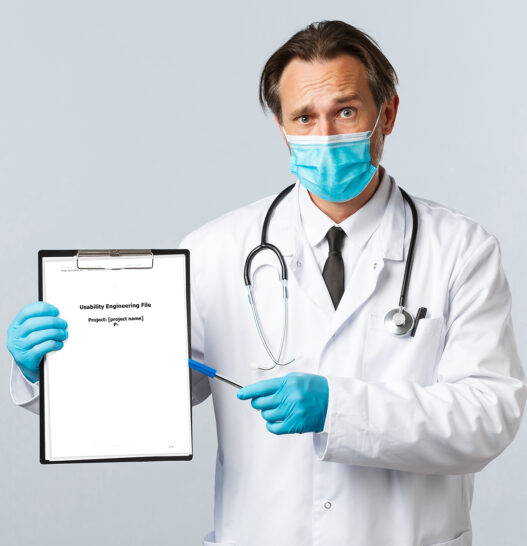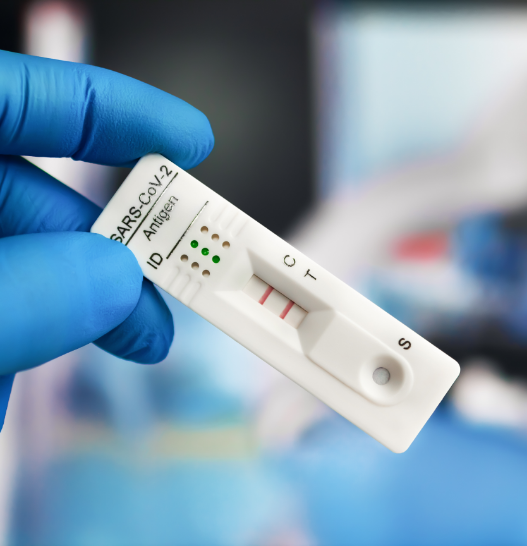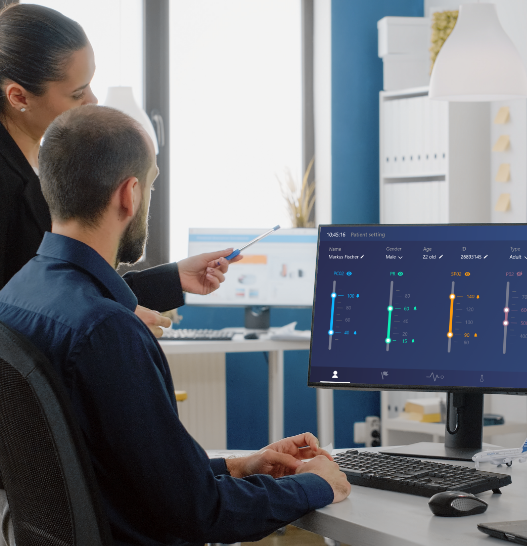Are you a medical device manufacturer and have to meet usability requirements for your medical device since the introduction of the MDR? Are you wondering why this is the case? You want to know what exactly has changed and what exactly is required from you in terms of usability of your medical device? You want to know how you can comply with all this?
With the introduction of the MDR, the requirements for the usability of your product have become much more extensive compared to the MDD. The usability is also tested much more intensively. In this article, we explain why this is the case, where you can find the relevant subitems that deal with the usability of your product, and provide you with a proposed solution for how you can implement the MDR requirements for the usability of your product.
Introduction: The current situation – what does the MDR change?
The MDD is history and you as a medical device manufacturer must now meet the requirements of the Medical Device Regulation (MDR) for approval on the European market. The MDR is much more comprehensive and precise in terms of the requirements for your product. This is already evident in the scope: Whereas the MDD still had 23 articles, with the MDR you have to deal with 123 articles. The number of annexes has increased from 10 (MDD) to 17 (MDR).
We find a very important clue why this is the case right at the beginning of the MDR. The MDR “is needed to establish a robust, transparent, predictable and sustainable regulatory framework for medical devices which ensures a high level of safety and health whilst supporting innovation. ” (source: MDR, Introduction, paragraph (1)). However, ” a fundamental revision of those Directives is needed” (source: MDR, Introduction, paragraph (1)).
Very roughly summarized, the MDR imposes requirements on:
- The products themselves
- The post-market surveillance
- The post-market surveillance
- The post-market surveillance
- The tracing
- The usability
You can find out more in our article „MDR – What changes for medical device manufacturers?“.
And why exactly do you need to do usability now?
The number of risk reports for medical devices has risen continuously in recent years. In 2012, the German Bundesinstitut für Arzneimittel und Medizinprodukte (Federal Institute for Drugs and Medical Devices) (BfArM) reported 3288 notifications for active and 4341 notifications for non-active medical devices. At the end of 2021, the notifications were 22,913 for active and 7,792 for non-active medical devices (source: Bfarm.de).
A data analysis conducted in 2017 showed that usability played a role in approximately 3,500 cases (i.e., approximately 11 percent of total cases). The following causes were identified:
- Incompatible components (263 cases
- Inadequate training or instruction of users (356 cases)
- Incorrect application (2,885 cases)
(source: Bfarm.de).
These data from the BfArM illustrate how important usability is for the safety of a product. Accordingly, it is only logical that the MDR places a much greater emphasis on the usability of medical devices. Most of the usability requirements can be found in Annex 1.
Annex 1 is entitled “General safety and performance requirements”. In addition, the MDR mentions the word “usability” twice outside of this annex: once in relation to post-market surveillance and once in relation to device software.
Important: Annex 1 is mandatory for all medical devices! Special usability requirements apply, for example, if your product is software or if you have laypersons as a user group.
The following passages in the MDR require that you address the usability of your medical device:
- Annex I, Chapter 1, Paragraph 1: This is about ensuring the safety of the patient, the user and any third parties during use.
- Annex I, Chapter 1, paragraph 3 b, c and d: Foreseeable use errors must be identified, analyzed and minimized.
- Annex I, Chapter 1, paragraph 5 a): Risks due to the ergonomics of the product must be minimized.
- Annex I, Chapter 1, paragraph 5 b: Consideration of users’ skills, abilities and physical conditions (or limitations) must be incorporated into product design.
- Annex I, Chapter 2, paragraph 21.3: Indicator and control displays must be able to be interpreted quickly and without error in the respective context of use. All indications and displays must be given suitable for the user and patients (who may also be users).
- Annex I, Chapter 2, paragraph 22: The safe use of the product by lay persons (if they are a user group) must be ensured.
- Annex I, Chapter 3, paragraph 23: Any instructions for use supplied with the product must also be clearly worded and demonstrably understandable to the intended users.
For detailed interpretations of the individual passages of the MDR that refer to the usability of your medical device, we recommend our article „Deep Dive: MDR and Usability“.
Our proposal for implementing the requirements: The Usability Engineering Process according to IEC 62366-1
Now you know the requirements of the MDR for the usability of your medical device. How you implement them is left up to you. There are no regulations here.
The usability engineering process according to IEC 62366-1 can make it much easier for you to implement the usability requirements for your medical device and help you to provide the right documentation for the notified body. In addition, the process is also FDA-compliant and therefore also an important part for an approval in America.
You can find out how the process works step by step in our article „Usability Engineering for Medical Devices according to IEC 62366-1“.
Conclusion
The MDR aims (among other things) to guarantee safe and innovative medical devices. In order to ensure safe use, some requirements are placed on the usability of your product. These can be found mainly in the “General Safety and Performance Requirements” (Annex 1 of the MDR). Since Annex 1 applies to all medical devices, you are obliged to address usability for compliance with the requirements made there.
How do the MDR usability requirements affect your product? What is your specific case? Comment on this post or get in touch via our contact form. We look forward to hearing from you.



